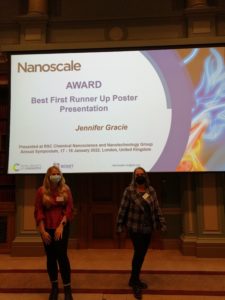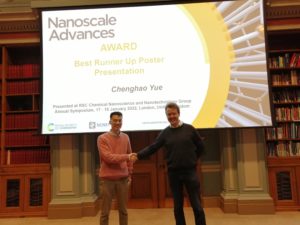Professor Zhiqun Lin joins the Associate Editor team
Welcome to Nanoscale and Nanoscale Advances!

We are delighted to welcome Professor Zhiqun Lin, Georgia Institute of Technology, USA, as a new Associate Editor working across Nanoscale and Nanoscale Advances.
Zhiqun Lin received his Ph.D in Polymer Science and Engineering from the University of Massachusetts, Amherst in 2002. He is currently a Professor in the School of Materials Science and Engineering at the Georgia Institute of Technology.
His research interests include solar cells, photocatalysis, electrocatalysis, batteries, quantum dots (rods), multifunctional nanocrystals, Janus nanostructures, conjugated polymers, semiconductor organic-inorganic nanocomposites, block copolymers, polymer blends, hierarchical structure formation and assembly, and surface and interfacial properties.
Submit your latest research to Professor Lin’s Editorial Office
Read some of his recent papers below.
Piezo-phototronic effect on photocatalysis, solar cells, photodetectors and light-emitting diodes
Baoying Dai, Gill M. Biesold, Meng Zhang, Haiyang Zou, Yong Ding, Zhong Lin Wang and Zhiqun Lin
Chem. Soc. Rev., 2021, DOI: 10.1039/D1CS00506E
Tailoring oxygen evolution reaction activity of metal-oxide spinel nanoparticles via judiciously regulating surface-capping polymers
Christopher D. Sewell, Zewei Wang, Yeu-Wei Harn, Shuang Liang, Likun Gao, Xun Cui and Zhiqun Lin
J. Mater. Chem. A, 2021, DOI: 10.1039/D1TA04511C
Continuous production of ultrathin organic–inorganic Ruddlesden–Popper perovskite nanoplatelets via a flow reactor
Gill M. Biesold, Shuang Liang, Brent K. Wagner, Zhitao Kang and Zhiqun Lin
Nanoscale, 2021, DOI: 10.1039/D1NR03239A
Stimuli-responsive Janus mesoporous nanosheets towards robust interfacial emulsification and catalysis
Jiangyan Yang, Jialin Wang, Yijiang Liu, Huaming Li and Zhiqun Lin
Mater. Horiz. 2020, DOI: 10.1039/D0MH01260B
Tailoring carrier dynamics in perovskite solar cells via precise dimension and architecture control and interfacial positioning of plasmonic nanoparticles
Xun Cui, Yihuang Chen, Meng Zhang, Yeu Wei Harn, Jiabin Qi, Likun Gao, Zhong Lin Wang, Jinsong Huang, Yingkui Yang and Zhiqun Lin
Energy Environ. Sci., 2020, DOI: 10.1039/C9EE03937F
An integrated experimental and theoretical study on the optical properties of uniform hairy noble metal nanoparticles
Di Yang, Yihuang Chen, Hongshang Peng, Gengxiang Chen and Zhiqun Lin
Nanoscale, 2018, DOI: 10.1039/C8NR07115B
Please join us in welcoming Professor Lin to Nanoscale and Nanoscale Advances!
Best wishes,
| Dr Heather Montgomery | Dr Jeremy Allen |
| Managing Editor, Nanoscale | Executive Editor, Nanoscale Advances |





















 “The development of thermoelectric materials has been considered as a key sustainable solution in dealing with the global energy dilemma by harvesting electricity from waste heat. Nanostructuring is a critical approach to enhance thermoelectric properties and coupled with other strategies, the development of thermoelectric nanostructures has been an active research discipline in exploring high-performance energy materials.
“The development of thermoelectric materials has been considered as a key sustainable solution in dealing with the global energy dilemma by harvesting electricity from waste heat. Nanostructuring is a critical approach to enhance thermoelectric properties and coupled with other strategies, the development of thermoelectric nanostructures has been an active research discipline in exploring high-performance energy materials.

